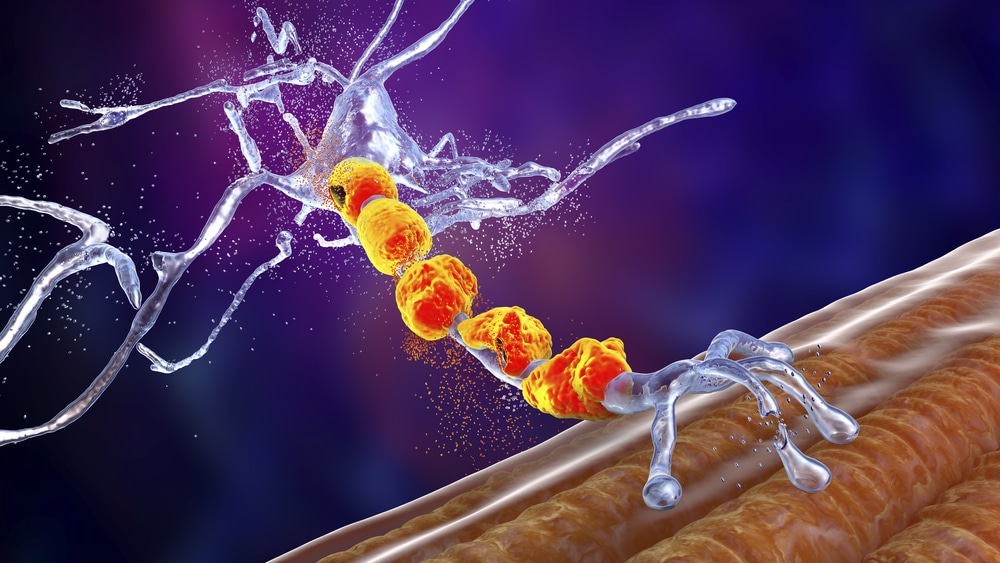Up to 30,000 Americans are currently living with amyotrophic lateral sclerosis, or ALS. While there is no known cure for this degenerative neurological disease, doctors can slow disease progression if the condition is detected early enough. Now, researchers may have discovered a biomarker that would allow ALS patients to get a diagnosis and start treatment earlier than ever before. The preliminary research was published in JAMA Neurology earlier this year, centering on a protein known as TDP-43. Read on to find out about the implications of this groundbreaking study.
Why Is TDP-43 Important?
As mentioned above, early diagnosis is the best way for doctors to slow disease progression in patients with ALS. However, the medical community hasn’t yet identified a biomarker for ALS. The National Cancer Institute defines a biomarker as “a biological molecule found in blood, other body fluids, or tissues that is a sign of a normal or abnormal process, or of a condition or disease.” In other words, a clear sign of the onset of a certain disease. But now, researchers suspect that the accumulation of TDP-43, a protein present in motor neurons, could be an effective biomarker for ALS. This suspicion was based on previous research, which revealed a crucial function of TDP-43 in axons of mouse models. Axons are responsible for neuron communication; thus, as axonal degeneration is a symptom of ALS, researchers concluded that TDP-43 accumulation in muscular nerve bundles could be an early biomarker for ALS.
Testing TDP-43 as an ALS Biomarker
To test the efficacy of TDP-43 accumulation as an ALS biomarker, researchers examined the muscle tissue of 22 deceased individuals: 10 people with confirmed cases of ALS at the time of their death and 12 without. Indeed, all 10 confirmed ALS patients had TDP-43 accumulations in their intramuscular nerve bundles, while the non-ALS patients had no accumulations. Researchers then assessed the tissue of 114 live patients who underwent muscle biopsies, none of which had a family history of ALS. Of those 114 biopsies, 71 showed evidence of intramuscular nerve bundles. Of those 71 biopsies, 33 had confirmed axonal TDP-43 accumulations in nerve bundles. Shockingly, all 33 of those patients were later diagnosed with ALS. With this research, the scientists concluded that TDP-43 accumulations may be an effective biomarker for ALS diagnosis.
Moving Forward with a Potential Biomarker
The results of this study suggest that TDP-43 accumulation may be a common hallmark for patients with ALS. With that in mind, researchers will move forward with the goal of confirming TDP-43’s efficacy as a biomarker for ALS diagnostics. With further research, experts may be able to identify the disease long before symptoms start, allowing doctors to provide faster, more effective treatment. The importance of TDP-43 could also be instrumental to an eventual cure for ALS, saving the lives of thousands.
_____
ALS is characterized by the death of both upper and lower motor neurons; thus, it stands to reason that neuronal communication could hold the key to diagnosing the disease earlier. While TDP-43 has not yet been confirmed as an ALS biomarker, the research is certainly promising. With further investment in neurological research and innovation, experts could be one step closer to improving ALS treatment.
Scantox is a part of Scantox, a GLP/GCP-compliant contract research organization (CRO) delivering the highest grade of Discovery, Regulatory Toxicology and CMC/Analytical services since 1977. Scantox focuses on preclinical studies related to central nervous system (CNS) diseases, rare diseases, and mental disorders. With highly predictive disease models available on site and unparalleled preclinical experience, Scantox can handle most CNS drug development needs for biopharmaceutical companies of all sizes. For more information about Scantox, visit www.scantox.com.

